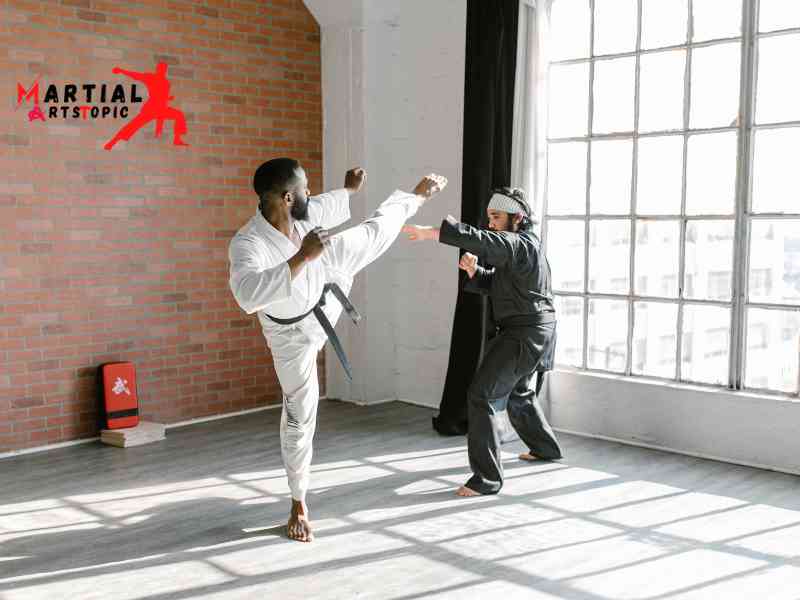
Kyokushin Karate for Self-Defense: Empowering Yourself in Real-Life Situations
What is Kyokushin Karate? Kyokushin Karate for Self-Defense: Empowering Yourself in Real-Life Situations in today’s unpredictable world, it is crucial to equip ourselves with the skills to protect ourselves and our loved ones in real-life situations. One martial art that stands out for its effectiveness in self-defense is the Kyokushin Karate. With its emphasis on full-contact sparring and practical techniques, the Kyokushin Karate provides individuals with the tools they need to feel confident and empowered in any self-defense scenario.
States found Kyokushin Karate, also known as “the ultimate truth Oyama in the mid-20th century. It is a discipline that combines elements of traditional karate, focusing strongly on physical conditioning and mental fortitude. Unlike many other martial arts, the Kyokushin Karate places great emphasis on full-contact sparring, enabling practitioners to develop the skills to defend themselves effectively in real-life situations.
One of the key aspects that sets the Kyokushin Karate apart is its practicality. The techniques taught in the Kyokushin Karate are effective in real-life encounters, where there are no rules or limitations. From striking and blocking techniques to throw and joint locks, the Kyokushin Karate equips individuals with a diverse range of skills that can be utilized in various self-defense situations.
The Kyokushin Karate places a strong emphasis on physical conditioning. Training sessions often involve rigorous exercises to build strength, endurance, and flexibility. This physical conditioning not only enhances a practitioner’s overall fitness but also prepares them for the physical demands of a real-life self-defense situation. By training regularly in Kyokushin Karate, individuals develop the physical capabilities to react quickly, generate powerful strikes, and maintain their composure under pressure.
However, the Kyokushin Karate is not just about physical strength. It also cultivates mental fortitude and resilience. Through disciplined training and the challenging nature of the art, practitioners develop mental toughness and the ability to stay calm and focused in high-stress situations. This mental strength is invaluable in self-defense scenarios, as it allows individuals to make quick decisions, assess threats, and respond appropriately.
Another significant advantage of training in the Kyokushin Karate for self-defense is the sense of community and camaraderie that comes with it. Kyokushin dojos (training centers) foster a supportive and inclusive environment where individuals of all ages and backgrounds come together to learn and grow. Training alongside like-minded individuals not only enhances motivation but also provides opportunities for realistic and controlled sparring, allowing practitioners to test and refine their self-defense skills in a safe setting.
What is Kyokushin Karate?
What is Kyokushin Karate? Kyokushin Karate, also known as full-contact karate, is a popular style of martial art that emphasizes physical conditioning and practical techniques. Developed by Masutatsu Oyama in the 1940s, the Kyokushin Karate combines elements of various martial arts to create a challenging and intense training regimen. The training in the Kyokushin Karate focuses on strong strikes, powerful kicks, and rigorous full-contact sparring. This style of karate promotes discipline, respect, and self-defense skills, making it a sought-after choice for practitioners of all ages and skill levels. Whether you’re looking to improve your fitness level or learn effective self-defense techniques, the Kyokushin Karate offers a comprehensive training experience.
History of Kyokushin karate
Kyokushin Karate: Unveiling the Rich History of This Martial Art Kyokushin Karate, also known simply as Kyokushin, is a powerful and dynamic style of martial art that has gained worldwide recognition and respect. With its roots deeply embedded in Japanese culture, Kyokushin Karate has a fascinating history that spans several decades. In this blog post, we will delve into the origins, development, and philosophy of Kyokushin Karate, shedding light on its remarkable journey.
Origins of Kyokushin Karate
Kyokushin Karate was founded by Masutatsu Oyama, a legendary figure in the world of martial arts. Born in 1923 in South Korea, Oyama began his martial arts training at a young age, practicing various styles such as Shotokan Karate, Judo, and Kendo. It was during his training at a mountain retreat in Japan that Oyama developed the foundation for what would become the Kyokushin Karate.
Development and Spread of Kyokushin Karate
In the late 1950s, Oyama opened his first dojo in Tokyo, Japan, where he began refining and teaching his unique style of karate. The name “Kyokushin” translates to “the ultimate truth,” reflecting Oyama’s vision of creating a martial art that combined physical strength, mental discipline, and spiritual growth.
One of the defining characteristics of the Kyokushin Karate is its emphasis on full-contact sparring and rigorous training. Oyama believed they could only develop true combat skills through intense physical conditioning and realistic fighting experiences. This approach attracted many martial artists seeking a more practical and challenging form of karate.
Over time, Kyokushin Karate gained recognition as a formidable martial art style, with its practitioners taking part in many tournaments and exhibitions around the world. The unique training methods and emphasis on physical toughness made Kyokushin Karate stand out from other styles, capturing the attention of both martial artists and spectators.
Kyokushin Karate Philosophy
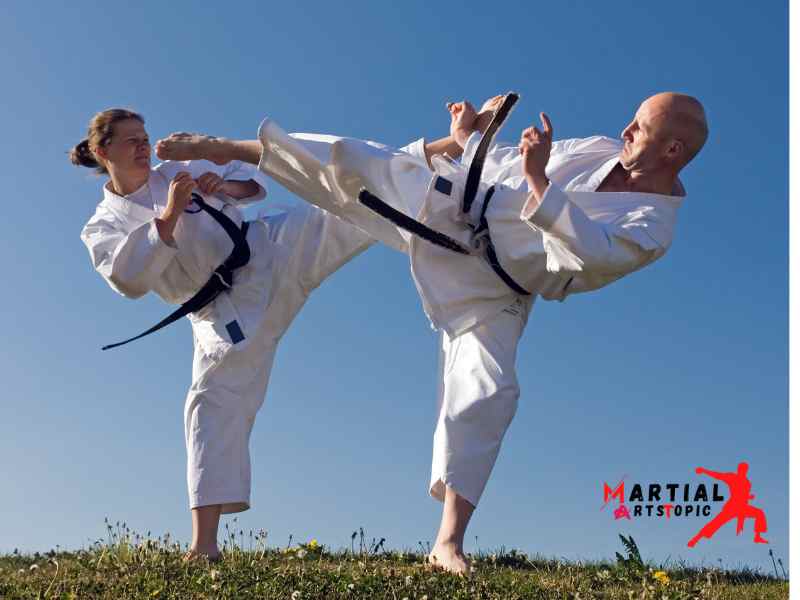
Beyond its physical aspects, Kyokushin Karate places great importance on the development of one’s character and pursuiting spiritual growth. The philosophy of Kyokushin revolves around the concept of “OSU,” which translates to “perseverance” or “pushing oneself to the limit.” They encouraged practitioners to embrace challenges, overcome obstacles, and strive for continuous self-improvement.
Besides promoting physical strength, Kyokushin Karate also emphasizes discipline, respect, and humility. It taught practitioners to respect their instructors, fellow students, and opponents, fostering a sense of camaraderie and fair play within the Kyokushin community.
Modern-day Impact and Legacy
Today, Kyokushin Karate has a significant global presence, with dojos in many countries. We can see its influence in the development of other martial arts styles, as well as in popular culture, through movies and media. The rigorous training and philosophy of the Kyokushin Karate continue to attract individuals seeking personal growth, self-defense skills, and a deeper understanding of martial arts.
Founder and origins of Kyokushin karate
Kyokushin Karate: Unveiling the Roots and Vision In the realm of martial arts, Kyokushin Karate stands out as a discipline that is revered for its relentless training, physical prowess, and unwavering spirit. Rooted in the principles of discipline, respect, and self-improvement, Kyokushin Karate has captured the hearts and minds of countless practitioners around the world. As we explore the origins and the visionary founder of Kyokushin Karate, we dive into a world where tradition meets innovation, power meets spirit, and the mind meets the body.
The Birth of Kyokushin Karate
Kyokushin Karate was founded in the mid-20th century by a legendary figure, Masutatsu Oyama. Born in 1923 in South Korea, Oyama started his martial arts journey at a young age, practicing various styles such as Korean Karate, Judo, and Kempo. It was during his training in Japan, under the tutelage of Gichin Funakoshi, the founder of Shotokan Karate, that Oyama shaped his own unique style.
Oyama’s Vision
Masutatsu Oyama’s vision for Kyokushin Karate was to create a martial art that encompassed the physical, mental, and spiritual aspects of training. He believed in pushing one’s limits, embracing pain, and testing oneself to the fullest extent. Oyama’s philosophy was deeply rooted in the idea of forging not only a strong body but also a strong character.
The Path of Kyokushin Karate
One of the defining characteristics of the Kyokushin Karate is its emphasis on full-contact sparring and intense physical training. Known for its rigorous workouts, Kyokushin Karate practitioners build strength, endurance, and flexibility through a combination of techniques such as kicks, punches, knees, and elbows. They designed the training sessions to push individuals beyond their perceived limits, fostering mental resilience and cultivating the indomitable spirit that they knew the Kyokushin Karate for.
Kyokushin Karate: A Global Phenomenon
Kyokushin Karate quickly gained popularity in Japan, and Oyama’s dedication to spreading the art worldwide led to its global expansion. Today, they can find Kyokushin Karate dojos in over 120 countries, with millions of practitioners dedicated to honing their skills and embodying the core principles of the discipline.
The Impact of Kyokushin Karate
The influence of the Kyokushin Karate extends far beyond the realm of martial arts. Its emphasis on discipline, respect, and personal growth has had a profound impact on the lives of practitioners. Many have credited Kyokushin Karate with transforming their lives, instilling confidence, fostering self-discipline, and developing a strong sense of character.
Importance and benefits of practicing Kyokushin karate
Kyokushin Karate: The Key to Physical and Mental Well-being in today’s fast-paced and stressful world, finding an outlet to release tension and improve overall well-being is crucial. One such activity that has gained immense popularity is the Kyokushin Karate. Kyokushin Karate is not just a martial art; it is a way of life that encompasses physical fitness, mental discipline, and self-defense techniques. In this blog post, we will explore the importance and many benefits of practicing the Kyokushin Karate.
Importance of Kyokushin Karate
- Physical Fitness: Kyokushin Karate is a full-body workout that engages every muscle in your body. From punches and kicks to intense sparring sessions, this martial art form improves strength, flexibility, endurance, and cardiovascular health. Regular practice of Kyokushin Karate promotes weight loss, tones muscles, and enhances overall physical fitness.
- Mental Discipline: The mental aspect of Kyokushin Karate is equally significant as the physical aspect. Practitioners are taught discipline, focus, and self-control. Through rigorous training and challenging techniques, individuals develop mental resilience, patience, and determination. These qualities extend beyond the dojo (training hall) and positively impact various aspects of life.
- Self-Defense: Learning self-defense techniques is essential in today’s world. Kyokushin Karate equips individuals with practical and effective self-defense skills. Students are trained to anticipate and respond to potential threats, boosting their confidence and personal safety. By mastering the art of self-defense, practitioners gain a sense of empowerment and security.
Benefits of Kyokushin Karate:
- Stress Relief: Life can be overwhelming at times, and stress can take a toll on our physical and mental health. Kyokushin Karate provides an excellent outlet for stress relief. The intense training sessions allow individuals to release pent-up energy and tension, promoting mental clarity and emotional well-being.
- Improved Focus and Concentration: In a world filled with distractions, cultivating focus and concentration is becoming increasingly challenging. Kyokushin Karate demands unwavering attention, enabling practitioners to improve their focus and concentration skills. This heightened mental clarity extends beyond training, positively impacting other areas of life, such as work or academics.
- Build Confidence and Self-Esteem: The Kyokushin Karate encourages personal growth and self-improvement. As practitioners overcome challenges and achieve new milestones, their confidence and self-esteem soar. This newfound confidence extends beyond martial art practice, positively affecting personal and professional relationships.
- Cultivate Discipline and Respect: Kyokushin Karate emphasizes discipline and respect for oneself and others. Practitioners adhere to a strict code of conduct, displaying humility, integrity, and respect both inside and outside the dojo. These values foster character development and promote a positive mindset.
- Community and Camaraderie: Kyokushin Karate provides an opportunity to become part of a supportive and inclusive community. Training alongside fellow practitioners creates a sense of camaraderie and belonging. The shared experiences, encouragement, and mutual respect within the Kyokushin Karate community create lifelong friendships. Overview of Kyokushin karate.
Kyokushin karate, also known as “the ultimate truth” karate, is a highly disciplined and rigorous martial art. Developed by Masutatsu Oyama in the 20th century, Kyokushin karate emphasizes physical conditioning, strength, and endurance. Its full-contact style characterized it, with practitioners engaging in intense sparring and powerful strikes. Kyokushin karate promotes self-discipline, mental focus, and respect for others. This traditional Japanese martial art is renowned for its emphasis on realistic combat techniques and its ability to instill a strong sense of discipline and personal growth in its practitioners. Whether you are looking to improve your physical fitness, develop self-defense skills, or cultivate mental discipline, Kyokushin karate offers a comprehensive training system that can benefit people of all ages and fitness levels.
Techniques and training methods
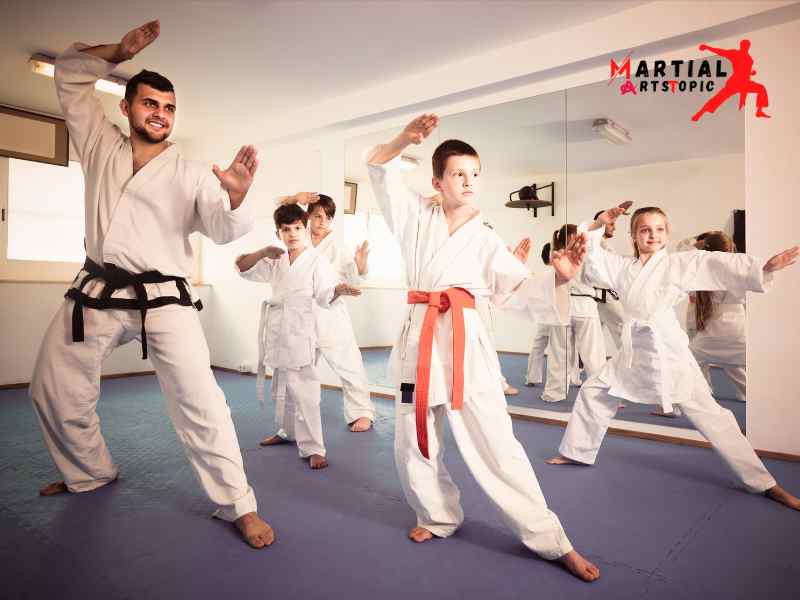
In the world of martial arts, the Kyokushin Karate has earned its reputation as one of the most disciplined and rigorous forms of self-defense. Originating in Japan, the Kyokushin Karate focuses on powerful strikes and a strong spirit. To truly master this formidable martial art, it is vital to understand the various techniques and training methods that lay the foundation for success. In this blog post, we will delve into the world of the Kyokushin Karate, exploring its techniques and training methods that will help you elevate your skills to new heights.
Basics of Kyokushin Karate
Kyokushin Karate emphasizes strong and efficient techniques that deliver maximum impact. From punches and kicks to knee strikes and elbow strikes, it executed every move with precision and power. The training begins with mastering the fundamental stances, such as the natural stance (shizentai-dachi) and the front stance (zenkutsu-dachi). These stances provide a solid base for executing strikes and maintaining stability.
Striking Techniques
Kyokushin Karate incorporates a wide range of striking techniques designed to overwhelm opponents with sheer force. Some of the essential techniques include:
- Tsuki (Punches): Kyokushin Karate practitioners develop powerful punches, such as gyaku-zuki (reverse punch) and oi-zuki (lunge punch), which are executed with speed and accuracy.
- Geri (Kicks): Kicks play a vital role in Kyokushin Karate. Mae-geri (front kick), mawashi-geri (roundhouse kick), and ushiro-geri (back kick) are just a few of the devastating kicks that practitioners must master.
- Hiza-geri (Knee Strikes) and Empi (Elbow Strikes): These close-range techniques enable fighters to deliver devastating blows in tight spaces, making them highly effective in close-quarters combat. Training Methods:
To achieve excellence in Kyokushin Karate, consistent and rigorous training is essential. Here are some training methods commonly employed by practitioners:
- Pad Work: This involves striking focus mitts or Thai pads held by a training partner. It helps improve accuracy, timing, and power in strikes.
- Kata: Kata, a series of pre-arranged movements, helps develop fluidity, precision, and concentration. Practitioners perform katas to simulate combat situations and enhance muscle memory.
- Kumite (Sparring): Kumite allows practitioners to apply their techniques in a controlled and dynamic environment. Regular sparring sessions foster adaptability, speed, and strategy.
- Conditioning: Kyokushin Karate training is notorious for its physical demands. Conditioning exercises like running, skipping rope, and strength training help build stamina, agility, and overall fitness. Mental and Spiritual Aspect:
Beyond physical techniques, the Kyokushin Karate places great emphasis on developing mental fortitude and a strong spirit. The training promotes self-discipline, perseverance, and respect for oneself and others. Meditation and breathing exercises are also integral to the Kyokushin Karate, helping practitioners achieve mental clarity, focus, and control.
Benefits of Practicing Kyokushin Karate
In a world where physical and mental well-being are highly valued, finding the perfect martial art that combines both aspects can be a daunting task. Look no further than the Kyokushin Karate, a discipline renowned for its rigorous training techniques and holistic benefits. In this blog post, we will explore the many advantages of practicing the Kyokushin Karate and how it can transform your life.
Enhances Physical Fitness
Kyokushin Karate is a dynamic full-contact martial art that promotes overall physical fitness. The intense training sessions, which include cardiovascular exercises, strength training, and flexibility drills, help practitioners develop robust endurance, strength, and agility. By training in Kyokushin Karate, you can improve your cardiovascular health, build lean muscle, and enhance your body’s overall coordination.
Boosts Self-Confidence
One of the significant benefits of the Kyokushin Karate is its ability to instill self-confidence in practitioners. Through regular training and the mastery of various techniques, individuals gain a sense of accomplishment and self-assurance. The structured belt system in Kyokushin Karate provides clear milestones and goals, allowing students to track their progress and feel a growing belief in their abilities.
Improves Mental Discipline
Mental discipline is a cornerstone of Kyokushin Karate training. The art emphasizes focus, concentration, and resilience. By practicing the Kyokushin Karate, individuals learn to push through physical and mental barriers, developing an unwavering determination and mental fortitude that can apply to various aspects of life. The ability to remain calm and composed under pressure becomes second nature, leading to improved decision-making skills and enhanced self-control.
Cultivates Self-Defense Skills
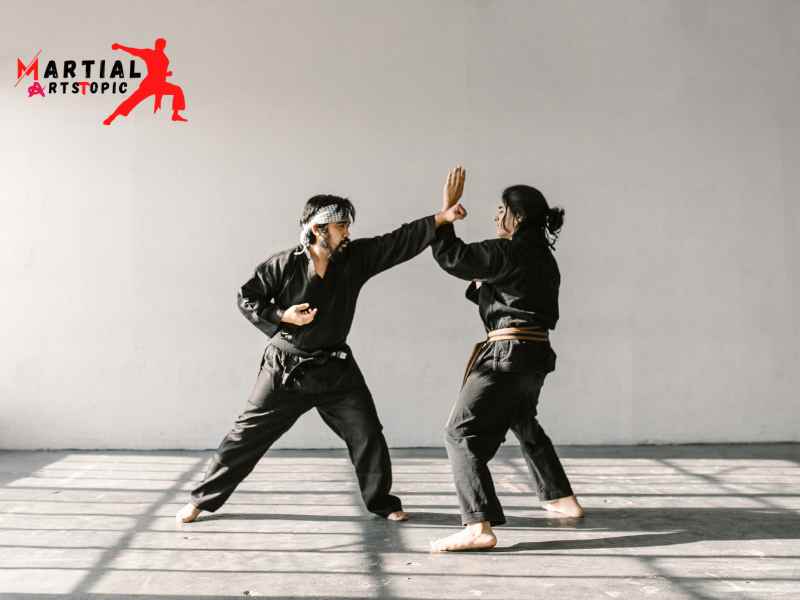
Besides its physical and mental benefits, Kyokushin Karate equips individuals with essential self-defense techniques. Kyokushin Karate emphasizes practical techniques that can be used in real-life situations, teaching students how to protect themselves and others. The training helps individuals develop awareness, reaction time, and the ability to assess potential threats, ensuring personal safety.
Promotes Emotional Well-being
Kyokushin Karate promotes emotional well-being by providing an outlet for stress relief and emotional release. The intense physical training releases endorphins, which act as natural mood enhancers, reducing anxiety and depression. The supportive community of fellow practitioners fosters a sense of belonging and camaraderie, creating a positive and encouraging environment that contributes to overall emotional wellness.
Enhances Focus and Concentration
Kyokushin Karate requires unwavering focus and concentration, as practitioners must memorize and execute complex techniques with precision. Through dedicated practice, individuals sharpen their mental acuity, improving their ability to concentrate and maintain focus in all areas of life. The improved focus translates into increased productivity, better academic performance, and an overall heightened level of alertness.
Importance and popularity of Kyokushin karate
Kyokushin Karate: Unveiling Its Importance and Popularity In the world of martial arts, Kyokushin Karate stands tall as a renowned discipline that has captivated the interest of both practitioners and enthusiasts alike. Combining powerful strikes, rigorous training, and a philosophy that transcends the physical aspects, Kyokushin Karate has gained immense popularity across the globe. In this blog post, we will explore the importance and widespread appeal of Kyokushin Karate, shedding light on its key elements that make it an exceptional martial art.
Kyokushin Karate, often referred to as “the ultimate truth,” was developed by the legendary Japanese martial artist, Masutatsu Oyama, in the mid-20th century. Derived from various traditional martial arts styles, such as Shotokan Karate, Kyokushin Karate places a strong emphasis on full-contact sparring, rigorous physical conditioning, and the cultivation of a strong spirit.
One of the fundamental aspects that contributes to the importance of the Kyokushin Karate is its focus on practical self-defense techniques. Unlike some martial arts that prioritize aesthetics or tournament success, the Kyokushin Karate aims to equip practitioners with the skills needed to defend themselves effectively in real-life situations. Through its intense training methods, Kyokushin Karate develops both physical strength and mental resilience, enabling individuals to handle challenging encounters with confidence and composure.
Another factor that has propelled the popularity of Kyokushin Karate is the sense of community and camaraderie fostered within its dojos (training centers). Students of all ages and backgrounds come together to train, support, and push each other to reach their full potential. The disciplined and respectful environment creates a strong bond among practitioners, forging lifelong friendships and a shared passion for the art.
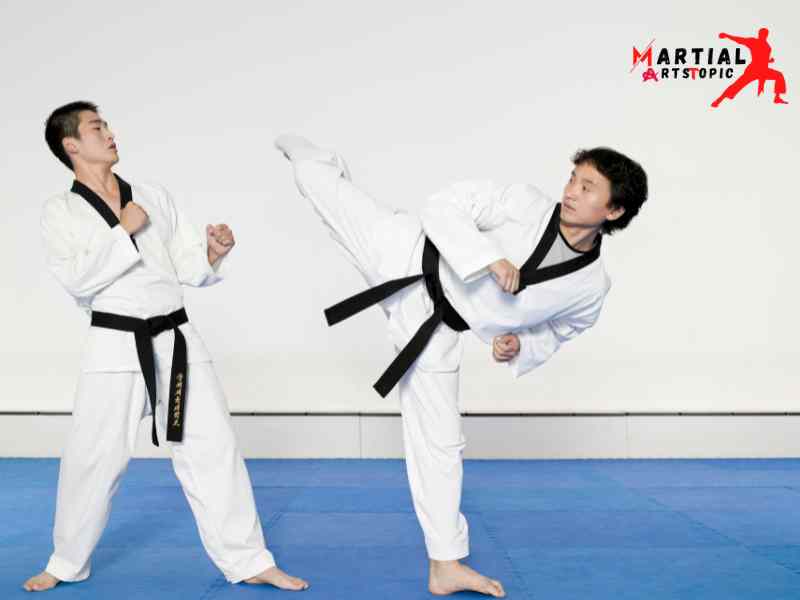
The physical benefits of practicing the Kyokushin Karate cannot be overstated. The training routines involve a wide range of exercises, including cardiovascular conditioning, strength training, flexibility drills, and intense sparring sessions. Regular practice of Kyokushin Karate enhances overall fitness levels, builds core strength, increases endurance, and improves coordination. It promotes weight loss, boosts cardiovascular health, and enhances mental focus.
Beyond the physical aspect, Kyokushin Karate places great emphasis on mental and spiritual growth. The discipline instills a sense of discipline, perseverance, and an indomitable spirit in its practitioners. Through the rigorous training, individuals learn to push past their limitations, conquer fears, and develop mental fortitude that extends beyond the dojo. This mindset proves invaluable in facing life’s challenges with resilience, determination, and a never-give-up attitude.
As Kyokushin Karate continues to gain popularity worldwide, it has also become a competitive sport, attracting athletes from different disciplines seeking to test their skills and abilities. The Kyokushin Karate tournaments, known for their intense full-contact fighting, showcase the culmination of years of training and dedication. These events not only promote healthy competition but also provide a platform for practitioners to showcase their technical prowess and physical prowess.
Famous Kyokushin Karate Practitioners
Famous Kyokushin Karate Practitioners Kyokushin Karate is a style of full-contact martial arts known for its rigorous training, intense competitions, and focus on physical and mental discipline. Over the years, many practitioners of Kyokushin Karate have made a name for themselves, both within the martial arts community and beyond. In this article, we will explore some of the most famous Kyokushin Karate practitioners.
Masutatsu Oyama
No list of famous Kyokushin Karate practitioners would be complete without mentioning the founder himself. Masutatsu Oyama, also known as “The Godhand,” established the Kyokushin Karate in the 1950s. He was renowned for his incredible strength, remarkable technique, and indomitable spirit. Oyama’s legacy has left an indelible mark on the world of martial arts.
Glaube Feitosa
Glaube Feitosa is a Brazilian Kyokushin Karate practitioner who is recognized as one of the best heavyweights in the sport’s history. He has won multiple championships, including the prestigious All Japan Open Weight Tournament. Feitosa’s explosive power, strategic mindset, and unwavering determination have solidified his reputation as a true Kyokushin legend.
Francisco Filho
Francisco Filho, a Brazilian Kyokushin Karate practitioner, is renowned for his exceptional kicking techniques and dynamic fighting style. He achieved great success in the world of Kyokushin, winning multiple championships and earning the nickname “The Prince of Knockouts.” Filho’s breathtaking performances have captivated audiences around the world and earned him a spot among the top Kyokushin Karate practitioners.
Andy Hug
Andy Hug, a Swiss Kyokushin Karate practitioner, left an indelible mark on the world of martial arts. Known for his exceptional kicking skills and charismatic personality, Hug became a fan favorite. He achieved great success in both Kyokushin Karate and kickboxing, winning many titles and earning the nickname “The Blue-Eyed Samurai.” Hug’s legacy continues to inspire aspiring martial artists worldwide.
Hajime Kazumi
Hajime Kazumi, a Japanese Kyokushin Karate practitioner, is celebrated for his lightning-fast kicks and formidable speed. He gained recognition for his impressive performances in the All Japan Open Weight Tournament, where he emerged as a dominant force. Kazumi’s exceptional technique and unwavering determination have solidified his place among the most famous Kyokushin Karate practitioners.
Kenji Midori
Kenji Midori, a Japanese Kyokushin Karate practitioner, is not only a celebrated fighter but also an influential figure in the martial arts world. After winning the All Japan Open Weight Tournament in 1987, Midori established the World Karate Organization (WKO) to promote Kyokushin Karate globally. His dedication to spreading the art and philosophy of Kyokushin has earned him widespread respect and admiration.
These are just a few examples of the famous Kyokushin Karate practitioners who have left an indelible mark on the sport. Through their skills, determination, and unwavering spirit, they have inspired generations of martial artists and continue to be celebrated as legends within the Kyokushin community. Their stories serve as a testament to the power of discipline, perseverance, and pursuiting excellence in the world of martial arts.
In conclusion
What is Kyokushin Karate? Kyokushin karate is a discipline that goes beyond physical strength and technique. It is a way of life that instills discipline, respect, and perseverance among its practitioners. Through rigorous training and the practice of full-contact fighting, Kyokushin karate aims to cultivate not only physical fitness but also mental and emotional fortitude. The philosophy of Kyokushin karate emphasizes self-improvement, self-control, and the development of a powerful spirit. By embracing these principles, individuals can not only become skilled martial artists but also lead balanced and fulfilling lives. Whether it is for self-defense, personal growth, or competition, Kyokushin karate provides a holistic approach to martial arts that can benefit practitioners of all ages and backgrounds.
